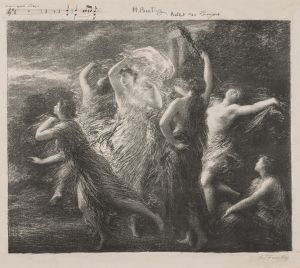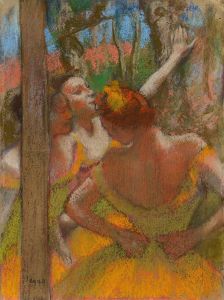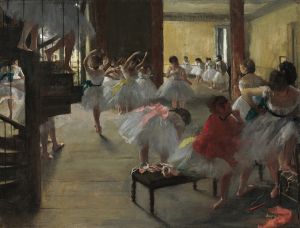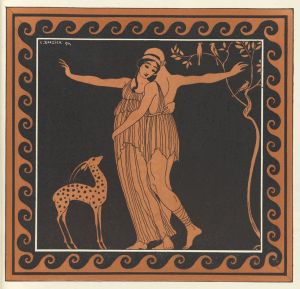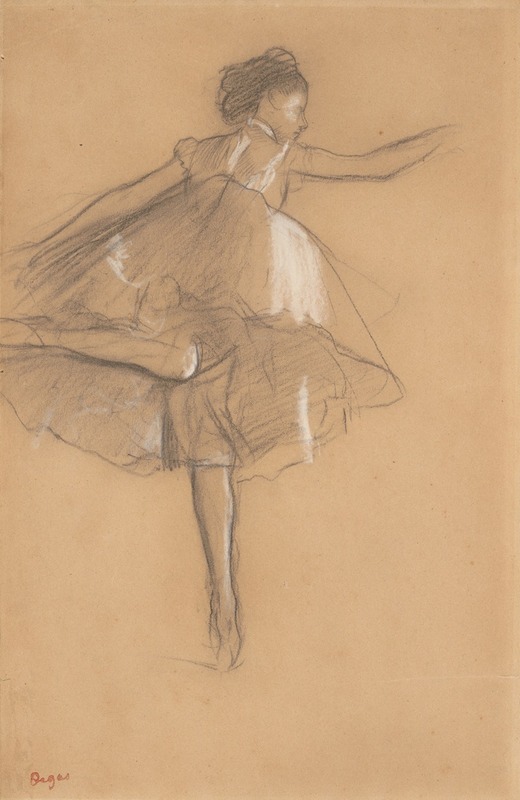
Dancer on pointe
A hand-painted replica of Edgar Degas’s masterpiece Dancer on pointe, meticulously crafted by professional artists to capture the true essence of the original. Each piece is created with museum-quality canvas and rare mineral pigments, carefully painted by experienced artists with delicate brushstrokes and rich, layered colors to perfectly recreate the texture of the original artwork. Unlike machine-printed reproductions, this hand-painted version brings the painting to life, infused with the artist’s emotions and skill in every stroke. Whether for personal collection or home decoration, it instantly elevates the artistic atmosphere of any space.
"Dancer on Pointe" is a renowned work by the French artist Edgar Degas, who is celebrated for his extensive exploration of the subject of dance. Degas, a prominent figure in the Impressionist movement, is known for his innovative approach to capturing movement and his keen interest in the human form. Although the exact title "Dancer on Pointe" may refer to various works by Degas, as he created numerous paintings, pastels, and sculptures of ballerinas, the theme remains consistent across his oeuvre.
Degas was born on July 19, 1834, in Paris, France, and he spent much of his career focusing on scenes of contemporary life, with a particular emphasis on ballet dancers. His fascination with dance is evident in the hundreds of works he produced on the subject, which capture the grace, discipline, and sometimes the arduous nature of a dancer's life. His works often depict dancers in rehearsal, at rest, or performing, providing a behind-the-scenes look at the world of ballet.
"Dancer on Pointe" typically refers to images of ballerinas poised delicately on the tips of their toes, a position known as "en pointe." This technique is a hallmark of classical ballet and requires significant strength and skill. Degas's portrayal of dancers en pointe highlights his ability to convey the elegance and physicality of ballet. His works are characterized by their dynamic composition, innovative use of perspective, and attention to detail.
Degas employed a variety of media to capture his subjects, including oil paints, pastels, and sculpture. His use of pastels, in particular, allowed him to achieve a softness and vibrancy that became a signature of his style. The medium enabled him to layer colors and create a sense of movement and immediacy, which is particularly effective in conveying the ephemeral nature of dance.
One of the distinguishing features of Degas's work is his unconventional compositions. He often cropped figures in unexpected ways, influenced by the burgeoning field of photography and Japanese prints. This approach gives his works a sense of spontaneity and realism, as if capturing a fleeting moment in time.
Degas's interest in dance was not merely aesthetic; it also reflected his broader concerns with modernity and the changing social landscape of Paris in the late 19th century. The ballet, as a subject, allowed him to explore themes of femininity, performance, and the intersection of art and life.
Throughout his career, Degas maintained a complex relationship with the Impressionist movement. While he exhibited with the Impressionists and shared their interest in capturing contemporary life, he differed in his technique and approach. Degas preferred working in the studio rather than en plein air and was more focused on line and form than the effects of light and color that preoccupied many of his contemporaries.
"Dancer on Pointe" and other works by Degas continue to be celebrated for their technical mastery and insightful portrayal of the world of ballet. They offer a window into the artist's unique vision and his ability to capture the beauty and complexity of human movement. Today, Degas's works are held in major museums and collections worldwide, where they continue to inspire and captivate audiences.





